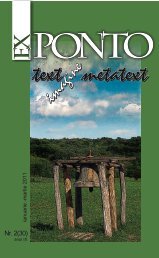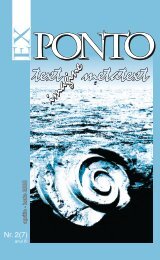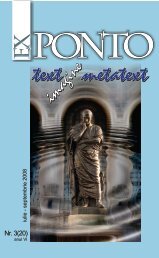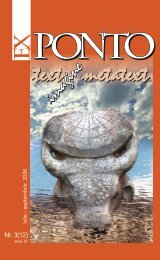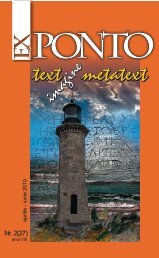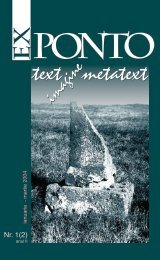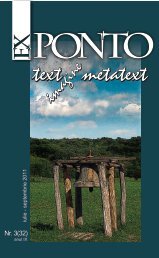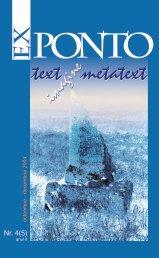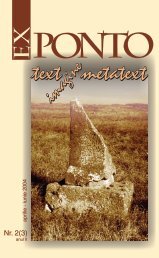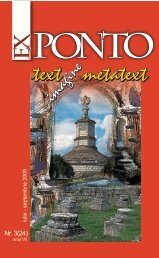Nr. 2 (19) anul VI / aprilie-iunie 2008 - ROMDIDAC
Nr. 2 (19) anul VI / aprilie-iunie 2008 - ROMDIDAC
Nr. 2 (19) anul VI / aprilie-iunie 2008 - ROMDIDAC
Create successful ePaper yourself
Turn your PDF publications into a flip-book with our unique Google optimized e-Paper software.
samizdat drawings and poems could not have taken place without Secret<br />
Police knowledge. Does this mean that the Secret Police used Stanescu by<br />
allowing him to entertain the people and by making life more bearable because<br />
it provided people with something to laugh at? Does this mean that, at least<br />
part of the Secret Police tacitly acknowledged that Stanescu’s caricatures<br />
might contribute to the ignition of a popular rebellion? Only with access to<br />
the Secret Police archive will future researchers answer these questions<br />
definitively. Irrespective of further scholarship Stanescu’s art has become<br />
part of communist history. He himself admitted that during communism he<br />
had more material to work with.<br />
“When you live in a dictatorship, when you live furiously, ideas come easier.<br />
Now, freedom has made me appeased me. I have sporadically sent drawings<br />
to newspapers.” 10<br />
Stanescu’s art was a product of communism, it became popular because<br />
of communist censorship, and paradoxically lost its fascination precisely he<br />
no longer had the communist oppressor to work against.<br />
Both Gopo and Stanescu practiced their art in an ideologically controlled<br />
environment. They chose what truth to present, and more importantly, whose<br />
truth to deal with. They both stuck with their own artistic truth when to have<br />
a different opinion about “truth” was the least desirable thing. Through their<br />
different artistic decisions Gopo and Stanescu pushed the limits, at least<br />
created greater elbow room, in the artistic realm that censorship was trying<br />
to keep under its strict aegis.<br />
Works Cited<br />
Vianu, Lidia. Censorship in Romania. Bucharest: Central European University<br />
Press, <strong>19</strong>98.<br />
Momente ale revoluţiei culturale din Romania [Moments from the cultural revolution<br />
in Romania]. Bucharest: Ed. Stiintifica, <strong>19</strong>64.<br />
Congresul al III-lea al educaţiei politice şi culturii socialiste [The Third Congress<br />
of the Political Education and Socialist Culture]. Bucharest: Ed. Politica, <strong>19</strong>87.<br />
Eugen Negrici. Literatura română sub communism [Romanian Literature under<br />
Communism]. Bucharest: Editura Fundaţiei Pro, 2003.<br />
Corneliu Baba. Însemnări ale unui pictor din est [Notes of the Painter from East].<br />
Bucharest: Fundaţia Culturală Română, <strong>19</strong>97.<br />
Duma, Dana. Ion Popescu Gopo. Bucharest: Meridiane, <strong>19</strong>96.<br />
Manolescu, Nicolae and Dumitru Micu. “Poezia – expresie a demnităţii umane”<br />
[Poetry – expression of the human dignity]. In Secolul XX, 5/<strong>19</strong>64.<br />
Stănescu, Mihai. Acum nu e momentul [It is not the right moment now]. Bucharest:<br />
Editura Uniunii Artiştilor Plastici, <strong>19</strong>90.<br />
Ex Ponto nr.2, <strong>2008</strong><br />
167




